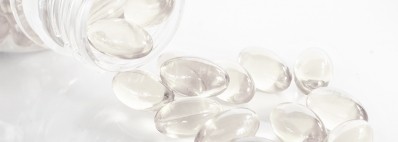Promotional Features
DuPont: Clinically evaluating probiotics to support immune health in childhood
Childhood is a critical period for immune health. The body’s defenses undergo major changes over these early years, equipping children to cope with the barrage of pathogens they face at school and setting them up for good long-term health. However, it takes time for the immune system to become resilient. To support this process, DuPont Nutrition & Biosciences has developed and evaluated probiotics tailored to the developing immune systems and microbiomes of infants and children.
The need for products that support immune development is evident in the data. On average, children experience five to six colds a year, twice as many as adults.1 The difference is even more pronounced in otherwise healthy children who attend preschool or primary school, who can suffer from as many as 12 colds a year.2
Rates of flu differ, too. In the 2009 to 2010 flu season, 28 out of every 1,000 children in the US visited a healthcare professional with symptoms attributable to influenza infections.4 Among people aged 65 years and older, the figure was 0.9 per 1,000. Similar data were seen in other years, resulting in figures that show people are at heightened risk of infection from birth to the start of adulthood.
Supporting kids in school
Parents, through their lived experiences, know their children are vulnerable to infections, particularly in the back-to-school period. The question is, how to help your children avoid infections? For many parents, dietary supplements are part of the answer. A survey of 1,000 adults with a child aged five to 12 years old found 51% of people give their kids over-the-counter supplements as prophylactics.5
The problem is many parents are choosing products that are unlikely to be effective. Vitamin C is the most widely used product to prevent colds, despite a meta-analysis of trials involving 11,000 subjects finding it had no effect on the incidence of infection.6
DuPont developed the probiotic HOWARU Protect Kids to provide parents with an alternative, scientifically studied way to support their children’s immune health. The product features a combination of two probiotic strains, Bifidobacterium lactis Bi-07 and Lactobacillus acidophilus NCFM, that are tailored to the developing microbiomes and immune systems of children.
DuPont’s selection of this two-strain combination is underpinned by data from a clinical trial of 326 healthy children aged three to five years old.7 The study enrolled children in winter and randomized them to take either placebo, NCFM alone or in combination with Bi-07. The data points to the combination as being the most effective intervention.
“Although treatment with the 1-strain preparation alone was effective, the 2-strain combination produced a more-pronounced effect, especially in the area of rhinorrhea,” the researchers wrote in the paper.
The trial demonstrated that the probiotic combination found in HOWARU Protect Kids resulted in a 72.7% reduction in the rate of fever, a 62.1% drop in the incidence of cough and a 58.8% decline in rhinorrhea, as compared to placebo.
Importantly for parents, these reductions translated into children missing fewer days of school due to illness. Children on the probiotic combination had 46.2% fewer sick days than their peers in the placebo group, despite taking significantly less antibiotics. At around three days, the number of sick days experienced by children on the probiotic combination in HOWARU Protect Kids was well below the average figures quoted in the academic literature.
Building long-term immune health
The data suggest probiotics can support immune health in school-age children. However, the need for a balanced microbiome, and the associated positive effects on immune health and metabolism, starts far earlier in life.8 Recognizing that, DuPont has developed probiotics tailored to pregnancy and the first two years of a child’s life.
DuPont HOWARU Protect Prenatal+ is the first step on a child’s immune health journey. Combining L. acidophilus La-14 and Lactobacillus rhamnosus HN001, this probiotic blend is designed to support the immune health of the mother and child during pregnancy and beyond. DuPont developed a related product, HOWARU Protect EarlyLife, to provide infants from birth up to the age of two years with a source of L. rhamnosus HN001. Research has showed the prevalence of allergic conditions, such as hay fever and wheeze, was significantly lower among children who received HN001 at the start of their lives all the way through age 11. 9
“This long‐term protection highlights the importance of an intervention that is early enough in life to influence developing allergic disease phenotypes,” the researchers wrote in the 11-year paper.
Developing probiotic products
Children are, and will remain, vulnerable during the early years of their lives but there is now a large body of evidence showing that a healthy immune system can mitigate some of the challenges they face. With HOWARU Protect Prenatal+, HOWARU Protect EarlyLife and HOWARU Protect Kids, DuPont has a portfolio of probiotic products that can support the immune development children need to thrive.
The probiotic strains in these products have undergone a series of clinical tests, showing their utility in multiple contexts and validating the broader concept of using bacteria to support immune health.
By formulating these strains into dietary supplements, food, and beverages, manufacturers can leverage this body of validatory evidence to create products that satisfy children’s appetites and their parents desire to give them a healthy start to life.
References
1. Common cold. NICE Available at: https://cks.nice.org.uk/common-cold#!backgroundSub:2. (Accessed: 4th September 2019)
2. Respiratory disorders. in Textbook of Pediatrics (eds. Helms, P. J. & Henderson, J.) 774–775
3. Markovich, M. P. et al. Back-to-School Upper Respiratory Infection in Preschool and Primary School-Age Children in Israel. Pediatr. Infect. Dis. J. 34, 476–481 (2015).
4. Fowlkes, A. et al. Incidence of medically attended influenza during pandemic and post-pandemic seasons through the Influenza Incidence Surveillance Project, 2009-13. Lancet Respir Med 3, 709–718 (2015).
5. Preventing colds in children: Following the evidence? National Poll on Children’s Health Available at: https://mottpoll.org/reports/preventing-colds-children-following-evidence. (Accessed: 4th September 2019)
6. Hemilä, H. & Chalker, E. Vitamin C for preventing and treating the common cold. Cochrane Database Syst. Rev. CD000980 (2013).
7. Leyer, G. J., Li, S., Mubasher, M. E., Reifer, C. & Ouwehand, A. C. Probiotic Effects on Cold and Influenza-Like Symptom Incidence and Duration in Children. Pediatrics 124, e172–e179 (2009).
8. Durack, J. & Lynch, S. V. The gut microbiome: Relationships with disease and opportunities for therapy. J. Exp. Med. 216, 20–40 (2019).
9. Wickens, K. et al. Effects of Lactobacillus rhamnosus HN001 in early life on the cumulative prevalence of allergic disease to 11 years. Pediatr. Allergy Immunol. 29, 808–814 (2018).
10. Wickens, K. et al. A differential effect of 2 probiotics in the prevention of eczema and atopy: A double-blind, randomized, placebo-controlled trial. J. Allergy Clin. Immunol. 122, 788–794 (2008).
11. Wickens, K. et al. A protective effect of L actobacillus rhamnosus HN001 against eczema in the first 2 years of life persists to age 4 years. Clin. Exp. Allergy 42, 1071–1079 (2012).
12. Wickens, K. et al. Early supplementation with Lactobacillus rhamnosus HN001 reduces eczema prevalence to 6 years: does it also reduce atopic sensitization? Clin. Exp. Allergy 43, 1048–1057 (2013).




